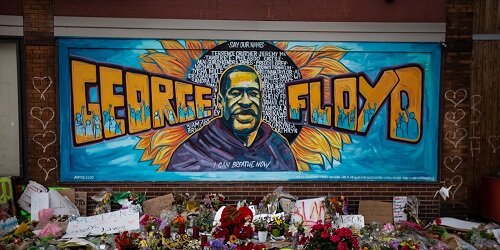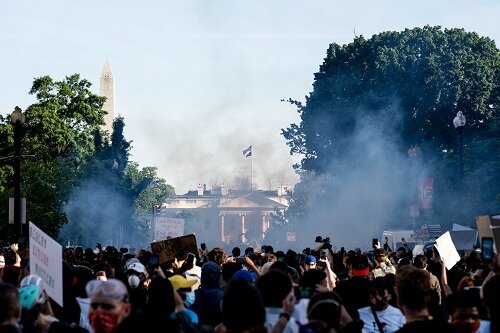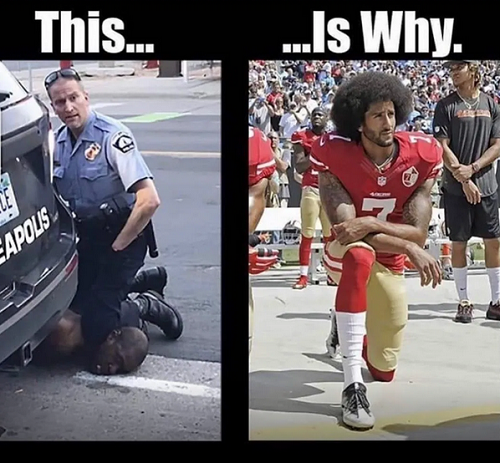Why do we teach history? Why do we learn history? History is not simply dates, names, and events that tell us the absolute truth about what happened in the past. History is the stories that we tell ourselves and others about how we view the past. As a terrible episode of Game of Thrones once said “There is nothing in the world more powerful than a good story.” Without the study of History, we would be doomed to never learn from the mistakes of the past (though this often happens anyway). But History is also a means of control. The stories we choose to tell and choose to ignore in History are just as important as the content of the stories themselves. As the great novel 1984 put it “Who controls the present controls the past, who controls the past controls the future.” The sudden awakening to Juneteenth and other stories of minority communities in America has demonstrated how American history has been changed or selectively forgotten, often to the benefit of the ruling (usually white) establishment. This week, we’ll examine several major (and often untold) stories of African American history that challenge our traditional understanding of American history.
Juneteenth
Prior to this year, almost nobody in mainstream American culture had ever heard of the Juneteenth holiday. I admit that even I, a former teaching assistant and M.A. in History knew nothing of this until only a few weeks ago. Juneteenth marks the date on June 19th, 1865 when Union soldiers entered Texas (one of the last holdouts of the Confederacy) to declare that all slaves had been freed under the Emancipation Proclamation. Traditionally, American history courses have taught that the Emancipation Proclamation of 1863 freed all of the slaves immediately. But this simply isn’t true. It only freed slaves in the “rebellious states” of the Confederacy. Since the Confederacy didn’t recognize president Lincoln’s authority to do this, they obviously ignored it. It also didn’t free any of the slaves in the border states (slave-holding states that didn’t join the Confederacy). Granted, the proclamation officially meant that slavery would be abolished at the end of the war. But it took years for those effects to finally be felt by the slaves living in the South.
So what does this tell us about History? Just because a government or legislature makes a dramatic claim or passes a law, it doesn’t automatically mean that African Americans will suddenly feel the benefits. American history is full of stories where governments made bold claims to support minority communities, but in reality those changes rarely reach them (or take a very long time to get there). Just this past month, the Minnesota legislature held a special session to help address issues facing minority communities. But in the end, almost nothing came of those efforts. The story of Juneteenth tells us that meaningful change requires more than just a nice speech and a bold promise.
The Tulsa Race Massacre
Another event that has previously been absent from American history teaching is that of the Tulsa Race Massacre of 1921. If you are reading this and haven’t heard of a massacre in Tulsa before, you’re certainly not alone. Back in 1921, the African American community in Tulsa, Oklahoma was a thriving group of successful businesses known as Black Wall Street. Many of the white residents in Tulsa resented this successful community and looked for any reason they could find to remove it. That excuse came when a young black man was accused of attempting to assault a young white woman in an elevator in Tulsa. Though no charges had been filed, the local newspaper headline incited violence by printing “Nab Negro for Attacking Girl in an Elevator.” Following this accusation, the police department began immediately deputizing other white citizens on the spot and proceeded to forcibly drive the African American residents from their homes and businesses. They set fire to buildings, dropped firebombs from airplanes, and even executed people in the street. Ultimately, over 300 African American residents were killed and most were forced to abandon their homes and businesses.
But those horrific events are only half the story. What proceeded after the massacre was a media campaign designed to blame the African American community. The Tulsa Tribune newspaper immediately blamed the Black Wall Street residents for inciting a race riot, and only reported a few dozen deaths from the incident. Since then, the shocking history of this event has been almost completely absent from American history classes. So what does this tell us about History? It shows that disinformation has always been a problem in our society. Propaganda can easily be manipulated to push an audience into one action or another. It also highlights how often racial violence is pinned on minorities to try to justify actions taken against them. For a more modern example, consider how recent peaceful protest movements have been conflated with the actions of a few violent rioters. This has been used to try to justify extreme measures against peaceful protestors, such as the violent clearing of Lafayette Square in Washington D.C.
Peaceful protestors violently cleared from Lafayette Park for the president’s Bible photo op.
MLK & The Civil Rights Movement
Ok, so some things have been left out. But what about the amazing story of the Civil Rights Movement? Isn’t that a shining example of how African American communities can just peacefully march for their rights and give stirring speeches at the Lincoln Memorial? Well, the history of Martin Luther King, Jr. and the Civil Rights Movement in general has been altered in subtle ways. For instance, though almost everyone now has a favorable opinion of MLK, he was deeply unpopular (especially among white populations) at the time of his death. In the same way, traditional history tends to demonize Malcom X, even though he renounced violence toward the end of his life. With the Rosa Parks story, very little mention is made that her bus protest was in part designed to kick off a boycott movement rather than a random, spontaneous act.
So what does this tell us about our recounting of History? These examples help dispel the myth of “polite protests.” History has sanitized the reality of the Civil Rights Movement to say that peaceful protest by itself was enough to bring about change. It wasn’t. There were plenty of less-than-peaceful events which occurred during this time that put pressure on the existing power system to act. The peaceful marches, sit-ins, and civil disobedience certainly helped turn public opinion, but many of these actions at the time were met with hostility. For a modern example, just look at the vicious backlash to Colin Kaepernick kneeling during the national anthem. This was a move that literally didn’t hurt a single person. But when violent protest acts occur, people use History to point to MLK’s or Kaepernick’s examples as though they would have accepted it back then. The truth is, they probably would have hated MLK and his movement back then, just as they hate Kaepernick and his actions now.
The Confederacy
But perhaps the biggest rewrite of all comes from the most tragic event in American history: The Civil War. Fortunately, most of the mainstream history teaching on this topic correctly identifies slavery as the cornerstone issue that launched the brutal conflict. Unfortunately, there is still a major alternate (and factually incorrect) telling of the story that tries to downplay the importance of slavery in convincing several states and hundreds of thousands of people to commit rebellion and outright treason against the United States. For evidence, look no further than The Declaration of the Causes of Seceding States which almost exclusively talks about slavery as the reason for leaving the Union. Instead, the counter-factual history of the Confederacy tries to emphasize state’s rights (the most important of which was to own slaves) and a vague notion about heritage (of an event that lasted only a few years).
So why is this rewriting of History so damaging? It obscures the actual facts around why the United States engaged in a devastating war with itself. It also allows people to dismiss the heinous acts of the Confederacy so they can play the victim. What we are seeing now with protests and the removal of Confederate status and battle flags is a modern-day response to the attempt to rewrite Civil War history. Many statues of Confederate figures were put up during the height of the Jim Crow era as a deliberate attempt to intimidate African American communities. The fact that many of these are coming down now is not the result of some politically correct attempt to censor and rewrite history. It is in fact an attempt to bring the history back into its factual context.
Jefferson Davis, the first (and only) president of the Confederacy.
The Bottom Line
In all, these events (and many more we don’t even know about) have been rewritten or selectively forgotten by historians throughout the decades. Often this is done to make whites look like the victims, or to pretend that discrimination and inequality were fixed a long time ago. They weren’t fix. Many of the obvious versions of discrimination in America have been removed, but the harder stuff remains. Understanding the history helps us to understand the present, and teaches us how to move forward for the future. We (white America) do not need to feel ashamed or guilty for the actions of our ancestors (or our ancestor’s culture). But we should feel guilty for not learning from these mistakes and for not teaching our children about this history.






